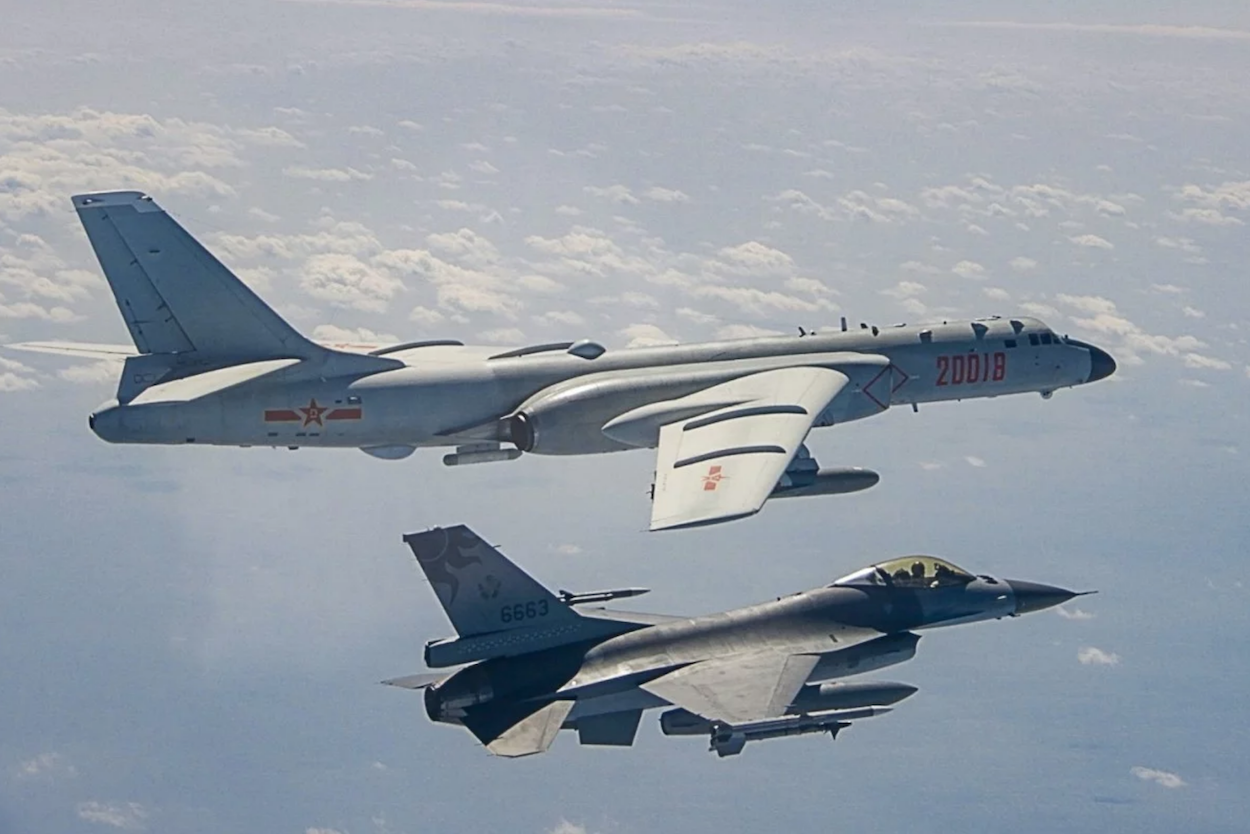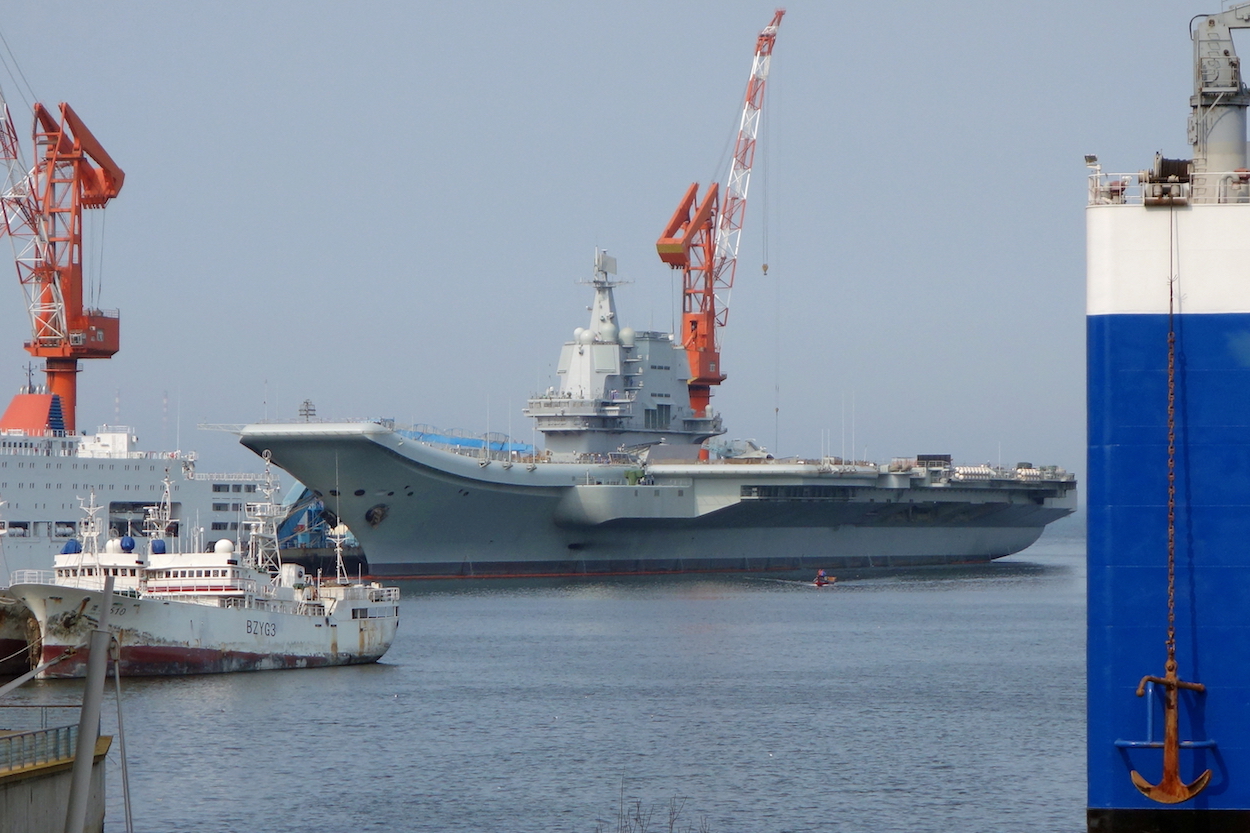by Brian Hioe
語言:
English
Photo Credit: Tsai Ing-wen/Facebook
CHINA’S MILITARY escalation toward Taiwan has visibly escalated in past weeks. Apart from military exercises conducted in the region, a visit to Taiwan by American Undersecretary of State for Economic Growth, Energy, and the Environment Keith Krach saw multiple consecutive days of warplanes sent into Taiwanese airspace.
Chinese warplanes crossed the median of the Taiwan Strait or Taiwan’s southwest air defense identification zone daily from September 17th to September 19th, and daily from September 21st to September 23rd. As such, Taiwan saw air intrusions from Chinese airplanes for six out of the past seven days.
 Taiwanese fighter plane shadowing a Chinese bomber earlier this year. Photo credit: Military News Agency, ROC
Taiwanese fighter plane shadowing a Chinese bomber earlier this year. Photo credit: Military News Agency, ROC
The Chinese government then announced that it would no longer recognize the median line of the Taiwan Strait on September 21st. China Foreign Ministry spokesperson Wang Wenbin stated that there was no such thing as the median line in the Taiwan Strait, due to the fact that Taiwan is part of China. Reportedly, when warned by radio by the Taiwanese air force that they had crossed the median line of the Taiwan Strait, Chinese pilots responded that there “was no median line” starting from September 18th.
Chinese warplanes only began to cross the median line of the Taiwan Strait last year. The first time in twenty years that Chinese warplanes deliberately crossed the median line took place last year in March 2019. The previous time the Chinese air force did so was in 1999.
The concept of the median line in the Taiwan Strait is not officially recognized by international law, nor has China ever recognized it. However, the concept is believed to have been established by the United States in 1954 as a barrier to conflict between the KMT and CCP. The coordinates of the median line were revealed by then-Minister of Defense Lee Jye in May 2004.
Given this recent uptick in Chinese military activity, it may not be surprising that some panic took place earlier today because of low flying fighter planes from the ROC Air Force that were rehearsing for National Day commemorations on October 10th.
Taiwan’s hands are relatively tied when it comes to invasions of Taiwanese airspace by Chinese warplanes. It is possible that ceasing to recognize the median line of the Taiwan Straits and sending Chinese warplanes into Taiwanese airspace may be aimed at baiting Taiwan. For example, if Taiwan were to retaliate against Chinese warplanes—even if China attacked first—this could provide pretext for larger-scale Chinese military assaults.
The ratcheting up of Chinese threats against Taiwan is related to the upgrading of ties between the US and Taiwan over past months, with historic diplomatic visits by high-ranking American government officials including Krach and Secretary of Health and Human Services Alex Azar. Chinese threats against Taiwan are also used as a means of signaling anger against the United States in the course of the US-China trade war and what many have described as a “new Cold War”, in threatening Taiwan as a proxy for the US without escalating to the point of directly targeting the US.
 China’s second aircraft carrier, the Shandong. Photo credit: Tyg728/WikiCommons/CC
China’s second aircraft carrier, the Shandong. Photo credit: Tyg728/WikiCommons/CC
According to commercial satellite photos released by the Center for Strategic and International Studies, China’s construction of its third aircraft carrier continues apace. Reports from earlier this year suggest that the pace of China’s construction of its third and fourth aircraft carriers is increasing.
It is to be seen what further moves the Chinese government will make to increase pressure on Taiwan. For example, China may also carry out maritime actions aimed at pressuring Taiwan.
One notes that illegal sand dredging by Chinese vessels frequently takes place off the coast of Taiwan’s outlying islands, potentially proving a danger if civilian vessels are used to stage for aggressive activity. To this extent, the interception of a speedboat with twelve Hongkongers attempting to flee to Taiwan onboard by the Chinese coast guard was an event that made international headlines last month. China also conducted naval exercises off of the shores of the Pratas/Dongsha Islands earlier this month, which are disputed territory but currently administered by Taiwan, and there are reports of increased commercial maritime activity by Chinese vessels around the islands.
More generally speaking, it is further significant that actions by the Chinese military include joint naval-aerial drills, as well as deployment of both bombers and fighter planes. It is probable that the Chinese military intends to use incursions of Taiwan’s airspace are not just intended to intimidate Taiwan, but also to serve as drilling for future conflict.
Unsurprisingly, Taiwanese government officials including President Tsai Ing-wen and Minister of Foreign Affairs Joseph Wu have been condemnatory of China’s actions. In past months, the American military has also stepped up activity around Taiwan to respond to China’s military incursions, leading to a pattern of tit-for-tat escalation. But consequently, the situation proves increasingly dangerous for Taiwan at present.

